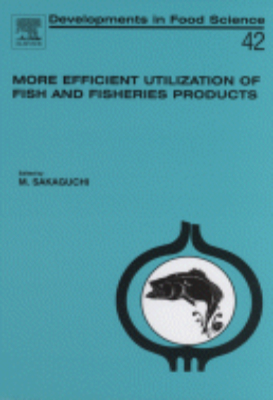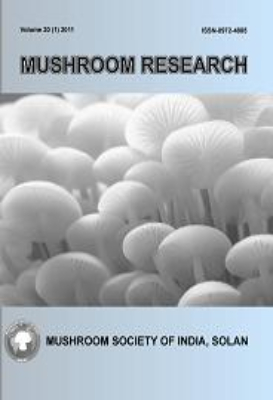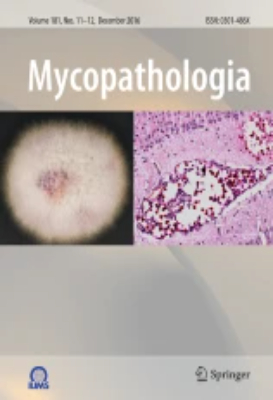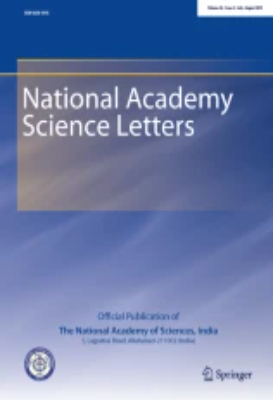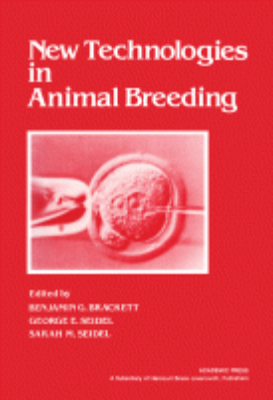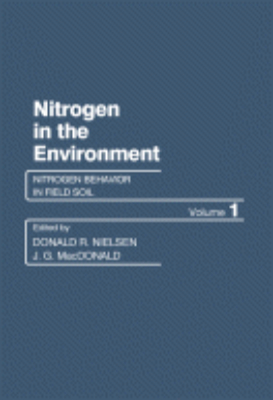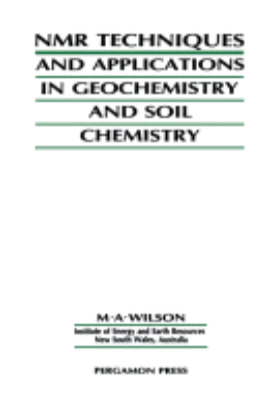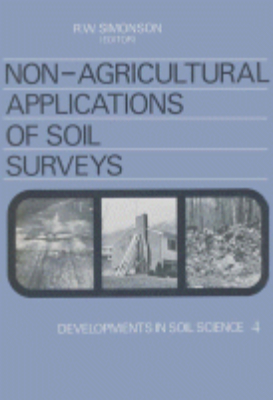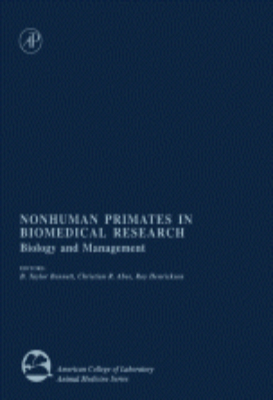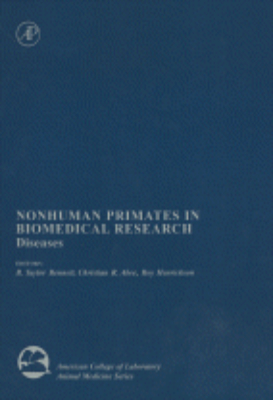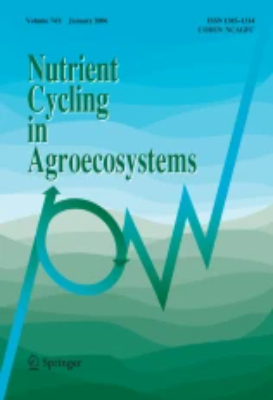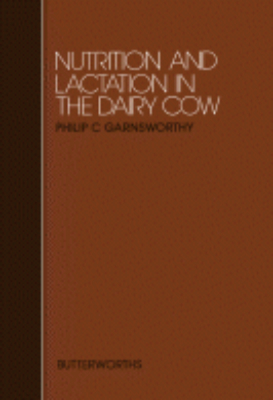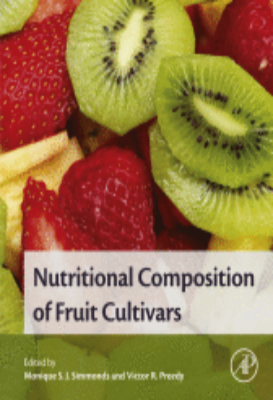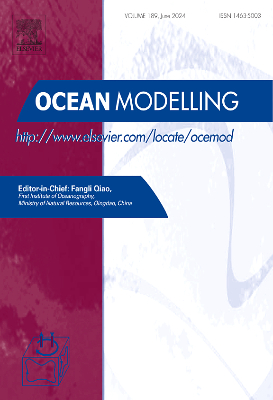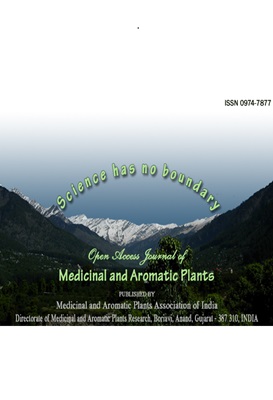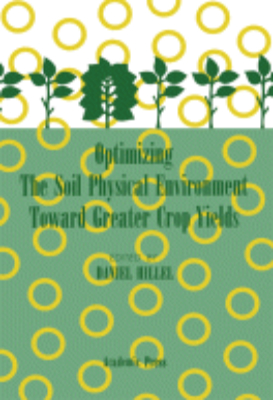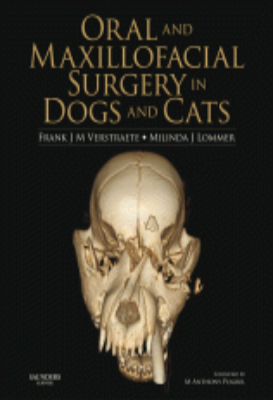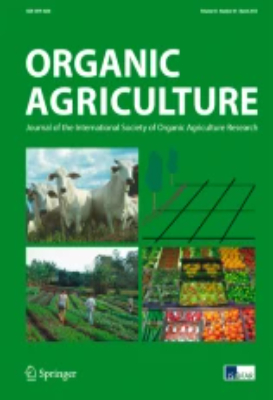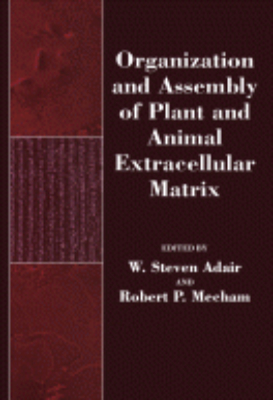Agricultural Science
Molecular Wine Microbiology
"Molecular Wine Microbiology features rigorous scientific content written at a level comprehensible for wine professionals as well as advanced students. It includes information on production and spoilage issues, the microbial groups relevant for wine production and microbial wine safety. Microbiology has long been recognized as a key tool in studying wine production, however only recently have wine microbiology studies been addressed at a molecular level, increasing the understanding of how microbiology impacts not only the flavor quality of the wine, but also its safety. Understanding, at a molecular level, how a starter culture can impact ethanol, glycerol, volatile phenols, mannoproteins, biogenic amines or ochratoxin A of a wine are just some of the core points that must be considered in order to achieve maximium consumer acceptability while addressing safety concerns during processing and storage. While other books offer insights into the technological aspects of enology, this book is written by expert microbiologists, who explore the positive and negative impacts of gene function in the production of wine, from a microbiological point of view. Key Features. Winner of the 2012 Jury Award in Enology from the International Organisation of Vine and Wine. Presents the most current methods of studying the microbiology of wine. Includes latest identification and typing methods, reducing identification time from days and weeks to minutes and hours. Provides important knowledge about the impact of microbiological factors at the molecular level for reduction of wine spoilage and increased wine quality and safety"
Mushroom Research
Focus and Scope Mushroom Research, the official publication of the Mushroom Society of India is a bi-annual journal. It publishes full papers and short communications reporting original research, basic and applied, which contribute significantly to the knowledge of the mushroom science and industry. Mini-reviews (with prior consent or invitation only) and articles of practical/technical importance will be published. News and views, and book reviews will also be considered. The author (s) should be the members of the Society. Peer Review Process The journal Mushroom Research is a double blind peer reviewed, refereed biannual international journal that provides rapid publication of articles in all areas related to mushroom sciences. The journal welcomes publications of high quality papers. Normally this double blind review system takes 2-3 months. Publication Frequency Bianually in July and December. Open Access Policy This journal provides immediate open access to its content on the principle that making research freely available to the public supports a greater global exchange of knowledge. SJIF Impact Factor 2014 - 3.213 2015 - 6.198 2016 - 6.474 2017 - 6.668 2020 - 7.291 Publication Ethics and Publication Malpractice Statement The Mushroom Research Journal is an official publication of Mushroom Society of India and it is expected that all the editors, authors and reviewers of the Mushroom Research Journal agree upon standards of proper ethical behavior and accept the responsibility for fulfilling the following duties and responsibilities Duties of Editors Transparency Editors evaluate submitted manuscripts exclusively on the basis of their academic merit and its relevance to the journal?s scope, without regard to the authors? race, gender, sexual orientation, ethnic origin, citizenship, religious belief, political philosophy or institutional affiliation. The Editor-in-Chief has full authority over the entire editorial content of the journal and the timing of publication of that content. Confidentiality Editors and editorial staff will not disclose any information about a submitted manuscript to anyone other than the corresponding author, reviewers, potential reviewers, other editorial advisers, and the publisher, as appropriate. Disclosure and conflicts of interest Editors and editorial board members will not use unpublished information disclosed in a submitted manuscript for their own research purposes without the authors? explicit written consent. Privileged information or ideas obtained by editors as a result of handling the manuscript will be kept confidential and not used for their personal advantage. Editors will recuse themselves from considering manuscripts in which they have conflicts of interest resulting from competitive, collaborative, or other relationships/connections with any of the authors, companies or institutions connected to the papers; instead, they will ask another member of the editorial board to handle the manuscript. Publication decisions The editors ensure that all submitted manuscripts being considered for publication undergo peer-review by at least two reviewers who are expert in the field. The Editor-in-Chief is responsible for deciding which of the manuscripts submitted to the journal will be published, based on the validation of the work in question, its importance to researchers and readers, the reviewers? comments, and such legal requirements as are currently in force regarding libel, copyright infringement and plagiarism. The Editor-in-Chief may confer with other editors or reviewers in making this decision. Involvement and cooperation in investigations Editors (in conjunction with the publisher and/or society) will take responsive measures when ethical concerns are raised with regard to a submitted manuscript or published paper. Every reported act of unethical publishing behaviour will be looked into, even if it is discovered years after publication. If, on investigation, the ethical concern is well-founded, a correction, retraction, expression of concern or other note as may be relevant, will be published in the journal. Duties of Reviewers Contribution to editorial decisions Peer review assists editors in making editorial decisions and, through editorial communications with authors, may assist authors in improving their manuscripts. Peer review is an essential component of formal scholarly communication and lies at the heart of scientific endeavour. Promptness Any invited referee who feels unqualified to review the research reported in a manuscript or knows that its prompt review will be impossible should immediately notify the editors and decline the invitation to review so that alternative reviewers can be contacted. Confidentiality Any manuscripts received for review are confidential documents and must be treated as such; they must not be shown to or discussed with others except if authorized by the Editor-in-Chief (who would only do so under exceptional and specific circumstances). This applies also to invited reviewers who decline the review invitation. Standards of objectivity Reviews should be conducted objectively and observations formulated clearly with supporting arguments so that authors can use them for improving the manuscript. Personal criticism of the authors is inappropriate. Acknowledgement of sources Reviewers should identify relevant published work that has not been cited by the authors. Any statement that is an observation, derivation or argument that has been reported in previous publications should be accompanied by the relevant citation. A reviewer should also notify the editors of any substantial similarity or overlap between the manuscript under consideration and any other manuscript (published or unpublished) of which they have personal knowledge. Disclosure and conflicts of interest Any invited referee who has conflicts of interest resulting from competitive, collaborative, or other relationships or connections with any of the authors, companies or institutions connected to the manuscript and the work described therein should immediately notify the editors to declare their conflicts of interest and decline the invitation to review so that alternative reviewers can be contacted. Unpublished material disclosed in a submitted manuscript must not be used in a reviewer?s own research without the express written consent of the authors. Privileged information or ideas obtained through peer review must be kept confidential and not used for the reviewer?s personal advantage. This applies also to invited reviewers who decline the review invitation. Duties of Authors Reporting standards Authors of original research should present an accurate account of the work performed and the results, followed by an objective discussion of the significance of the work. The manuscript should contain sufficient detail and references to permit others to replicate the work. Review articles should be accurate, objective and comprehensive, while editorial 'opinion' or perspective pieces should be clearly identified as such. Fraudulent or knowingly inaccurate statements constitute unethical behaviour and are unacceptable. Data access and retention Authors may be asked to provide the raw data of their study together with the manuscript for editorial review and should be prepared to make the data publicly available if practicable. In any event, authors should ensure accessibility of such data to other competent professionals for at least 10 years after publication (preferably via an institutional or subject-based data repository or other data centre), provided that the confidentiality of the participants can be protected and legal rights concerning proprietary data do not preclude their release. Originality and plagiarism Authors should ensure that they have written and submit only entirely original works, and if they have used the work and/or words of others, that this has been appropriately cited. Publications that have been influential in determining the nature of the work reported in the manuscript should also be cited. Plagiarism takes many forms, from "passing off" another's paper as the author's own, to copying or paraphrasing substantial parts of another's paper (without attribution), to claiming results from research conducted by others. Plagiarism in all its forms constitutes unethical publishing behaviour and is unacceptable. Multiple, duplicate, redundant or concurrent submission/publication Papers describing essentially the same research should not be published in more than one journal or primary publication. Hence, authors should not submit for consideration a manuscript that has already been published in another journal. Submission of a manuscript concurrently to more than one journal is unethical publishing behaviour and unacceptable. Authorship of the manuscript Only persons who meet these authorship criteria should be listed as authors in the manuscript as they must be able to take public responsibility for the content: (i) made significant contributions to the conception, design, execution, data acquisition, or analysis/interpretation of the study; and (ii) drafted the manuscript or revised it critically for important intellectual content; and (iii) have seen and approved the final version of the paper and agreed to its submission for publication. All persons who made substantial contributions to the work reported in the manuscript (such as technical help, writing and editing assistance, general support) but who do not meet the criteria for authorship must not be listed as an author, but should be acknowledged in the "Acknowledgements" section after their written permission to be named as been obtained. The corresponding author should ensure that all appropriate coauthors (according to the above definition) and no inappropriate coauthors are included in the author list and verify that all coauthors have seen and approved the final version of the manuscript and agreed to its submission for publication. Disclosure and conflicts of interest Authors should?at the earliest stage possible (generally by submitting a disclosure form at the time of submission and including a statement in the manuscript)?disclose any conflicts of interest that might be construed to influence the results or their interpretation in the manuscript. Examples of potential conflicts of interest that should be disclosed include financial ones such as honoraria, educational grants or other funding, participation in speakers? bureaus, membership, employment, consultancies, stock ownership, or other equity interest, and paid expert testimony or patent-licensing arrangements, as well as non-financial ones such as personal or professional relationships, affiliations, knowledge or beliefs in the subject matter or materials discussed in the manuscript. All sources of financial support for the work should be disclosed (including the grant number or other reference number if any). Acknowledgement of sources Authors should ensure that they have properly acknowledged the work of others, and should also cite publications that have been influential in determining the nature of the reported work. Information obtained privately (from conversation, correspondence or discussion with third parties) must not be used or reported without explicit, written permission from the source. Authors should not use information obtained in the course of providing confidential services, such as refereeing manuscripts or grant applications, unless they have obtained the explicit written permission of the author(s) of the work involved in these services. Hazards and human or animal subjects If the work involves chemicals, procedures or equipment that have any unusual hazards inherent in their use, the authors must clearly identify these in the manuscript. If the work involves the use of animals or human participants, the authors should ensure that all procedures were performed in compliance with relevant laws and institutional guidelines and that the appropriate institutional committee(s) has approved them; the manuscript should contain a statement to this effect. Authors should also include a statement in the manuscript that informed consent was obtained for experimentation with human participants. The privacy rights of human participants must always be observed. Peer review Authors are obliged to participate in the peer review process and cooperate fully by responding promptly to editors? requests for raw data, clarifications, and proof of ethics approval, patient consents and copyright permissions. In the case of a first decision of "revisions necessary", authors should respond to the reviewers? comments systematically, point by point, and in a timely manner, revising and re-submitting their manuscript to the journal by the deadline given. Fundamental errors in published works When authors discover significant errors or inaccuracies in their own published work, it is their obligation to promptly notify the journal?s editors or publisher and cooperate with them to either correct the paper in the form of an erratum or to retract the paper. If the editors or publisher learns from a third party that a published work contains a significant error or inaccuracy, then it is the authors? obligation to promptly correct or retract the paper or provide evidence to the journal editors of the correctness of the paper. Duties of the Publisher Handling of unethical publishing behaviour In cases of alleged or proven scientific misconduct, fraudulent publication or plagiarism, the publisher, in close collaboration with the editors, will take all appropriate measures to clarify the situation and to amend the article in question. This includes the prompt publication of an erratum, clarification or, in the most severe case, the retraction of the affected work. The publisher, together with the editors, shall take reasonable steps to identify and prevent the publication of papers where research misconduct has occurred, and under no circumstances encourage such misconduct or knowingly allow such misconduct to take place. Access to journal content The publisher is committed to the permanent availability and preservation of scholarly research and ensures accessibility by partnering with organizations and maintaining our own digital archive. Mushroom Society of India allows free access to Mushroom Research journal on the website http://epubs.icar.org.in/ejournal/index.php/index/loginsource=%2Fejournal%2Findex.php%2Findex%2Fuser after registering to the website. Sponsors Indian Council of Agricultural Research Journal History Mushroom Society of India (MSI) was established in August 1990 at headquarter NCMRT-Solan (Now Directorate of Mushroom Research) with 10 founder members and its membership has since then crossed 550 life members, 36 annual members and 49 library members throughout the world. The society registered under society registration Act 1860 vide No.60/91 dated 21.05.1991 at Solan (HP). Since its inception, MSI has organized two International Conferences, two National symposium. Presently MSI has 550 life members, 36 annual members and 49 library members throughout the world. One of the major objectives of the MSI was to bring out a journal to cater to the needs of the researchers and growers. It has fulfilled its commitment and the first issue of the Mushroom Research was in researchers and mushroom growers hands. It has been possible with the help of the members, executive council, editorial staff and especially the contributors to the back volume issue. Till date 32 volumes, each having issues have been published.
New Technologies in Animal Breeding
New Technologies in Animal Breeding looks at new reproductive technologies in breeding domestic animals, such as sex selection, frozen storage of oocytes and embryos, in vitro fertilization and embryo culture, amphibian nuclear transplantation, parthenogenesis, identical twins and cloning in mammals, and gene transfer in mammalian cells. It summarizes the state-of-the art and offers perspectives on future directions for several animal industries of great importance in food production, including artificial insemination, embryo transfer, poultry breeding, and aquaculture. Organized into five sections encompassing 14 chapters, this book begins with an overview of animals in society and perspectives on animal breeding. It then discusses the animal industries that are heavily dependent on reproductive technology, including those engaged in cloning, selfing, aquaculture, artificial insemination, and embryo transfer. It also explains the developing technologies as well as their potential applications and impacts on animal production, along with special economic considerations, such as the benefits of reproductive management, synchronization of estrus, and artificial insemination of beef cattle and sheep. The final chapter considers biomedical and agricultural research, implementation of new technologies in animal breeding, and research in animal reproduction. This book is an essential reference for scientists and researchers interested in animal science and animal reproduction.
Nitrogen Behavior in Field Soil
Nitrogen in the Environment, Volume 1: Nitrogen Behavior in Field Soil is the first of a two-volume treatise based on manuscripts presented at the international conference on ""Nitrogen in the Environment, held at the University of California Conference Center, Lake Arrowhead, in February, 1977. All original manuscripts were revised in accordance with discussions at the conference. The chapters published in these volumes are those revised manuscripts, with provisions in each chapter to preserve the major suggestions for their improvement. These two volumes Nitrogen Behavior in Field Soil and Soil-Plant-Nitrogen Relationships should be of value in bringing into perspective current knowledge on selected aspects of nitrogen in the environment. This book contains 26 chapters and begins with a paper on field trials with isotopically labeled nitrogen fertilizer. Separate chapters follow on topics such as computer simulation modeling for nitrogen in irrigated croplands; spatial variability of nitrogen in soils; application of gaseous-diffusion theory to measure denitrification; and measurement and prediction of anaerobiosis in soils.
NMR Techniques & Applications in Geochemistry & Soil Chemistry
The book provides an in-depth review of the state of the art of NMR spectroscopy as applied to a wide range of geochemical problems. It is intended to assist geochemists and spectroscopists working at the interface between geochemistry and NMR, and almost all areas of organic and inorganic geochemistry where NMR has had an influence are discussed.
Nonhuman Primates in Biomedical Research: Biology and Management
Nonhuman Primates in Biomedical Research: Biology and Management represents the most comprehensive publication of its type on nonhuman primates. It also provides basic information on the biology and management of primates for anyone responsible for the care and use of these animals. A related book on primate diseases will be published in 1996.
Nonhuman Primates in Biomedical Research: Diseases
This volume and its companionNonhuman Primates in Biomedical Research: Biology and Managementrepresent the most comprehensive publications of their type on nonhuman primates. This volume addresses the diseases of nonhuman primates with an emphasis on the etiological factors, clinical signs, diagnostic pathology, therapy, and management. Its companion volume serves as a general reference for those who provide care for these animals and for those who use them in biomedical research.
Nutrition and Lactation in the Dairy Cow
Nutrition and Lactation in the Dairy Cow is the proceedings of the 46th University of Nottingham Easter School in Agricultural Science. Said symposium was concerned with the significant advances in the field of nutrition and lactation in the dairy cow. The book is divided in five parts. Part I deals with the principles behind nutrition and lactation of cows. Part II discusses the cows nutrient interactions; responses to nutrients that yield protein and energy; and the influence of nutrient balance and milk yields. Part III tackles the efficiency of energy utilization in cows and its relation to milk production. Part IV talks about food intake of cows and the factors that affect it, while Part V deals with the different feeding systems for cows. The text is recommended for those involved in raising cows and dairy production, especially those who would like to know more and make studies about the relationship of nutrition and lactation of cows.
Nutritional Composition of Fruit Cultivars
"Nutritional Composition of Fruit Cultivars provides readers with the latest information on the health related properties of foods, making the documentation of the nutritive value of historical cultivars especially urgent, especially before they are lost and can't be effectively compared to modern cultivars. Because there is considerable diversity and a substantial body of the compositional studies directed towards commercial varieties, this information is useful for identifying traits and features that may be transposed from one variety to another. In addition, compositional and sensory features may also be used for commercialization and to characterize adulteration. Detailed characterization of cultivars can be used to identify ""super-foods"". Alternatively, unmasked historical cultivars may be the focus of reinvigorated commercial practices. Each chapter in this book has sections on the botanical aspects, the composition of traditional or ancient cultivars, the composition of modern cultivars, a focus on areas of research, the specialty of the communicating author of each chapter, and summary points. Key Features. Presents the botanical aspects and composition of both traditional and modern plants, including in-depth insight into current research, and overall summary points for each fruit for consistent comparison and ease of reference. Provides important information in the consideration of preservation, transference, or re-introduction of historical/traditional cultivars into current crop science. Provides details on compositional and sensory parameters, from aroma and taste to micro- and macronutrients. Includes data on nutraceuticals and novel components that have proven to impact on, or be important in, food quality, storage, processing, storage, and marketing"
Optimizing the Soil Physical Environment Toward Greater Crop Yields
Optimizing the Soil Physical Environment Toward Greater Crop Yields contains the proceedings of an invitational panel convened during the International Symposium on Soil-Water Physics and Technology held at The Hebrew University Faculty of Agriculture in Rehovot, Israel, August 29 to September 5, 1971. Organized into 13 chapters, this book begins with a discussion on the criteria for determining the aims and direction of research in soil physics and technology. Some chapters deal with the transformation and fluxes of energy and matter in the field, particularly water, soil temperature, soil structure, soil salinity, radiation climate, and nutrient supply and uptake. The book also explores the methods of measuring, managing, and modifying the crop production system to greater agricultural advantage. This book will reflect not only what is known, but also what is missing in the incomplete conception of this environment.
Oral and Maxillofacial Surgery in Dogs and Cats
Oral and Maxillofacial Surgery in Dogs and Cats offers a unique, detailed, comprehensive and highly illustrated account of surgical procedures that will improve outcomes for all surgical and dental specialists. In drawing together the expertise of specialists worldwide, it will also prove indispensable for general practitioners with a dental and oral caseload. Basic principles are considered prior to in-depth treatment of surgical conditions. The book combines expertise from both human and veterinary oral surgeons to provide an authoritative reference with a strongly practical slant. It is likely to become the standard work in the field for many years.
Organization and Assembly of Plant and Animal Extracellular Matrix
Organization and Assembly of Plant and Animal Extracellular Matrix presents a state-of-the-art view of some of the experimental systems in plant and animal matrix biology. It discusses certain principles underlying establishment of complex three-dimensional architecture cross broad evolutionary boundaries. The opening chapter reviews studies on the cellular mechanisms responsible for storage, release, assembly, and function of extracellular matrices during early sea urchin development. The subsequent chapters describe the structure, assembly, disassembly, and molecular biology of the Chlamydomonas reinhardtii cell wall. The chapters also summarize the status of work on basement membrane assembly. Important insights into approaches to identify critical molecular domains and the complexity of relating defined molecular associations to establishment of matrix architecture are provided. A family of discovered cell wall genes that encode protein products containing up to 70% glycine is presented in Chapter 4. This is followed by a discussion on the role of alginate self-assembly in cell wall formation in Fucus. The book goes on to address the issue of protein-carbohydrate recognition with a detailed discussion of plant and animal lectins. Chapter 7 tackles a family of genes encoding higher plant hydroxyproline-rich glycoproteins (HRGPs) and the relationship between the HRGP genes cloned and their products. The final two chapters are devoted to one of the most important classes of protein modifying enzymes for extracellular matrix formation and function, the prolyl hydroxylases. This book will be of help to workers in plant and animal matrix in understanding information, approaches, and ideas that they may not normally encounter.


